NVIDIA GeForce GTX 670 Review Feat. EVGA: Bringing GK104 Down To $400
by Ryan Smith on May 10, 2012 9:00 AM ESTSynthetics
We’ll also take a quick look at synthetic performance to see if NVIDIA’s choice of clockspeeds and disabling a SMX had any kind of other impact we haven’t anticipated. We’ll start with 3DMark Vantage’s Pixel Fill test.
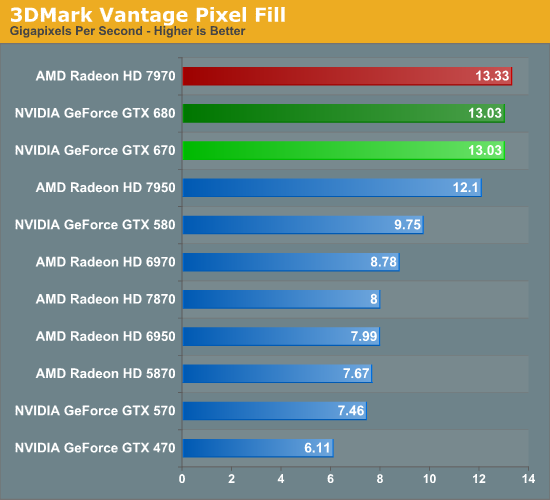
Pixel Fill is said to be memory bandwidth limited, and for good reason. Even with the lower clockspeed of the GTX 670, the fact that it has memory bandwidth equal to the GTX 680 means that it achieves equal performance in this test, confirming that GTX 670 can utilize its memory bandwidth just as well as GTX 680 can.
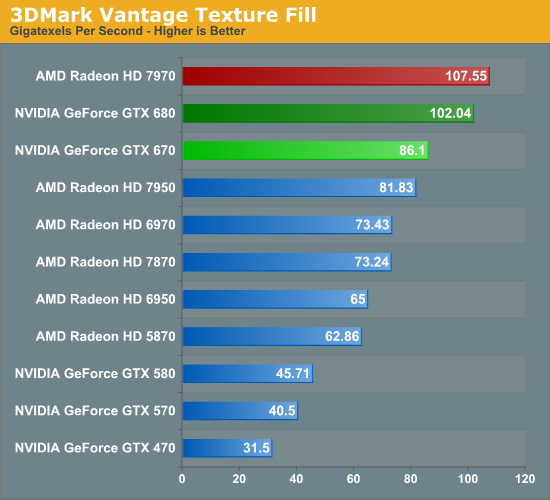
Our second test is 3DMark’s Texel Fill test, which as expected shows a moderate gap between the GTX 670 and GTX 680. Thanks to the loss of an SMX and the lower clocksped the GTX 670 only achieves 85% of the performance of the GTX 680, which thanks to the GTX 670’s more aggressive boost clock is a bit better than what we’d expect from the specifications.
Our third theoretical test is the set of settings we use with Microsoft’s Detail Tessellation sample program out of the DX11 SDK
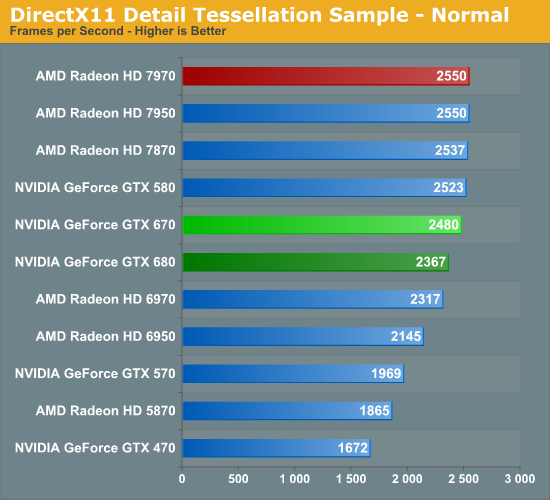
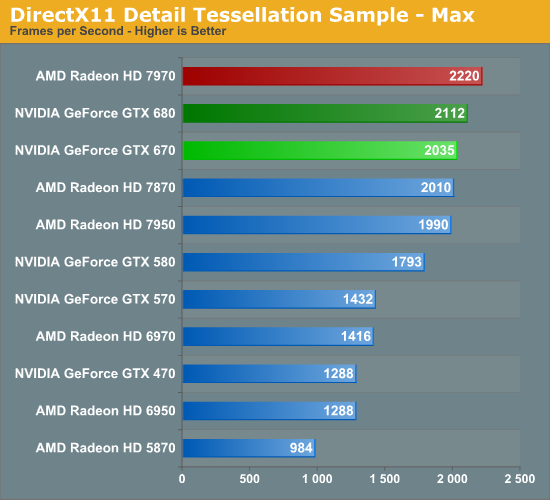
As expected GTX 670 falls behind GTX 680, but again not by nearly as much as we’d expect. The loss of the SMX means GTX 670 lost a Polymorph Engine, but with only a 4% gap with maximum tessellation you’d never be able to tell.
Our final theoretical test is Unigine Heaven 2.5, a benchmark that straddles the line between a synthetic benchmark and a real-world benchmark as the engine is licensed but no notable DX11 games have been produced using it yet.
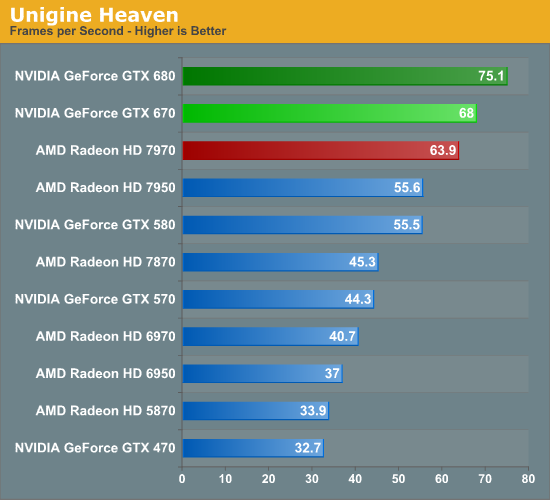
With Heaven the gap between the GTX 680 and GTX 670 once again opens up similarly to what we saw in our compute benchmarks with SmallLuxGPU. This means the GTX 670 falls behind by about 10%, reflecting the shader-heavy nature of this benchmark.










414 Comments
View All Comments
warmbit - Tuesday, July 17, 2012 - link
If you want to see what we really have GTX670 performance in games is worth taking a look at this overview:http://warmbit.blogspot.com/2012/05/analiza-wyniko...
On the right side, select your language for translation (Google Translate).
Gastec - Tuesday, November 13, 2012 - link
These are the comments of people reading AnandTech articles? Gamers? Enthusiasts? WHERE?? A bunch of trolls barking at each other. Not one useful comment, not even one to express USER oppinion after USING the card for a while. NOT ONE to say if the colors look better or worse than on the last generation card or the competition ones. You are all just a bunch of ....spit on you trolls!Gastec - Tuesday, November 13, 2012 - link
I've been holding this question unaswered in me for years. I would like to know which card produces the best image quality given the same conditions and settings, a nVidia one or Ati/AMD one. Image quality as in the closest to reality or closest to what the image producer indended. And If I get an aswer I want it argumented, no "because it has PhysX!" "because it rocks!" childish like considerations. Picture examples would be greatly apreciated. Thank you, have a good day and try not to troll too much.Gastec - Tuesday, November 13, 2012 - link
It had to be like that of course. Always against me. Two games I want to play,only two I don;t care about the others: Crysis and The Elder Scrolls V: Skyrim. And what do I see?? nVidia will work on one but not the other, AMD will work on the other one but not on the first one. What the f...k is that!?? What card should I get and why? Pictures please. Money is a concern.